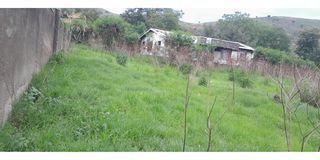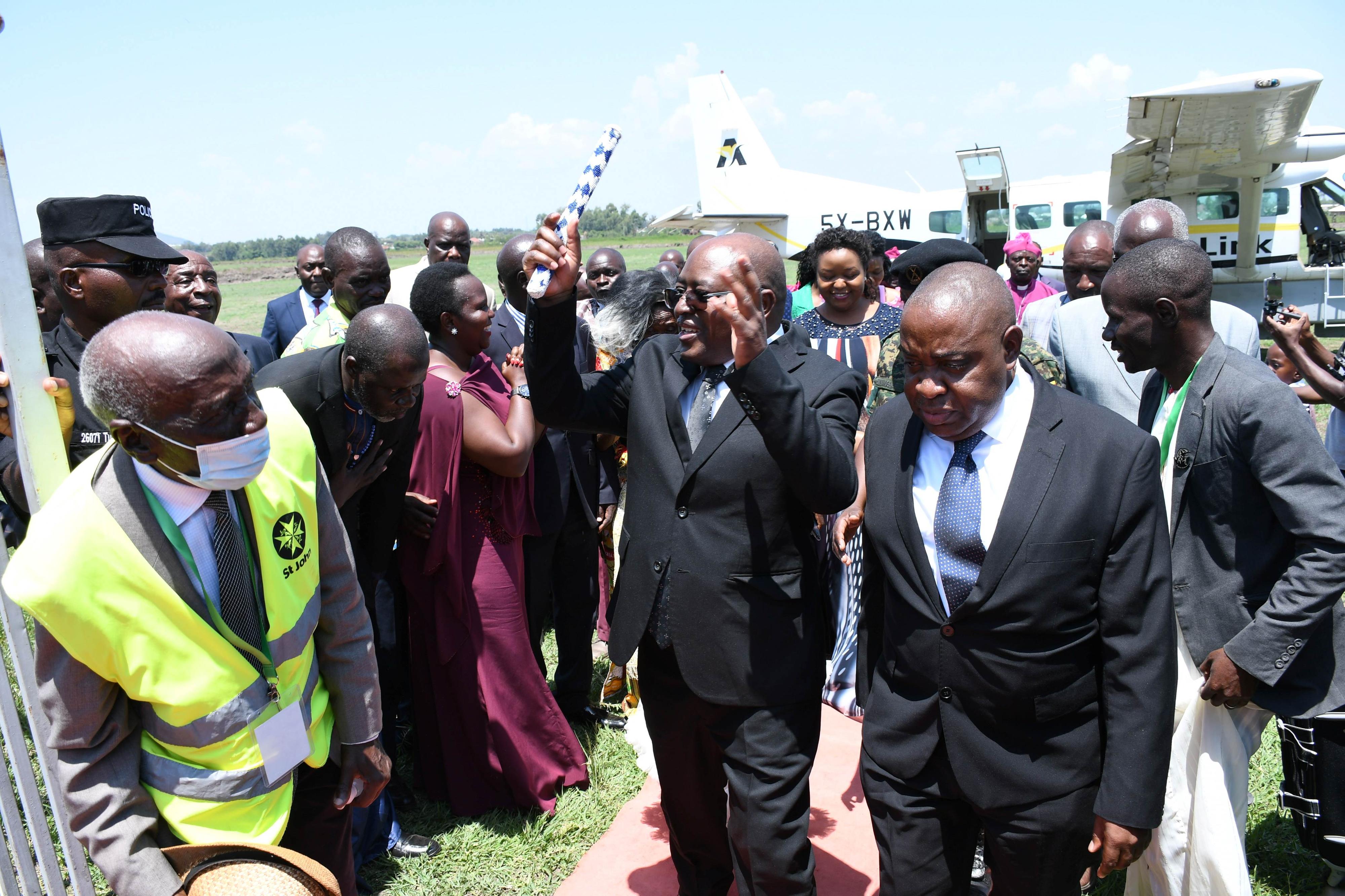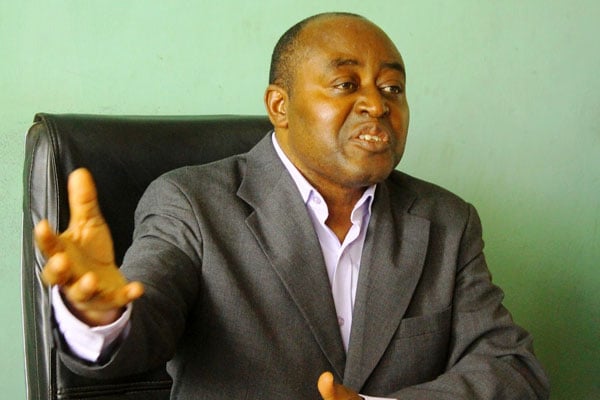Rwenzururu kingdom to turn destroyed palace into museum

The dilapidated Buhikira royal palace of Obusinga Bwa Rwenzururu in Kasese Town. The palace was destroyed in November 2016 and King Charles Wesely Mumbere and dozens of his royal guards were arrested and later charged with, among others, terrorism. PHOTO | JEROME KULE BISTWANDE
What you need to know:
- Currently, Omusinga Mumbere resides in a private residence on Mbogo Road in Kasese Town, although it remains unverified whether the residence was acquired by the kingdom.
Rwenzururu kingdom plans to make the palace of Obusinga Bwa Rwenzururu on Kibanzanga road in Kasese Town, a museum.
The announcement comes after Omusinga on fourth last week returned to the Kasese district after spending nearly seven years in prison after he was arrested in 2016 together with other royal guards leaving others dead.
The Rwenzururu Kingdom’s Prime Minister, Mr Joseph Kule Muranga, in an interview with this publication, said it was a strategic move to transform the palace into a museum.
The palace is in a dire state, with parts overrun by shrubs, while some buildings are on the brink of collapse. The palace was destroyed in November 2016 by an army-led operation.
“We are going to ask the king to allow us to turn it into a museum so that we can display our artifacts. In our culture, the king cannot go where blood was shed. Therefore, the museum would serve as a constant reminder of what transpired. It could also serve as a tourist destination, similar to Namugongo where the Uganda martyrs were killed,” Mr Muranga said.
He added: “For nearly seven years, the kingdom has been in negotiations and activities aimed at securing the release of the king and his subjects. Although the king has regained his freedom and returned to Kasese to reign over his people, he cannot return to Buhikira Palace due to the tragic events of a November 2016 raid that resulted in his arrest, the loss of royal guards, and the loss of lives,” he said.
Mr Muranga said according to Rwenzururu culture, it is forbidden for the king to revisit a place where blood was shed.
He argued that if developed into a museum, the palace could generate revenue for the cultural institution. The next step hinges on whether Omusinga Mumbere accepts Mr Muranga’s request.
He disclosed that the government has already acquired land in Kasese Town for Shs150 million, where the new palace will be constructed, announcing that the architectural designs for the new palace have been received by the king, and construction will soon commence, with the Uganda Peoples Defence Forces (UPDF) engineering brigade overseeing the project.
Mr Muranaga said in the interim, the kingdom will initiate the construction of office spaces on the same land.
Currently, Omusinga Mumbere resides in a private residence on Mbogo Road in Kasese Town, although it remains unverified whether the residence was acquired by the kingdom.
Before Omusinga’s return, the kingdom had launched a fundraising campaign to collect Shs4.5 billion for Springs International Hotel in Kasese Town, as an asset and a source of revenue.
Ms Jovia Mbambu, the Kasese District tourism officer, said transforming Buhikira Royal Palace into a museum would significantly enhance the district’s tourism offerings.
She said dark tourism, which explores areas with a history of tragedy, is a substantial aspect of tourism in regions that have endured dark moments.
“Developing tourism in this district is a positive step. The events of 2016 should not have occurred, but since they did, the palace can be transformed into a museum to provide a narrative of what transpired, how it unfolded, and the underlying causes. In Rwanda, the genocide has been a major draw for tourists,” she said.
Furthermore, she highlighted that the museum could play a vital role in educating people about conflict prevention and promoting peace, not only in the Kasese District but also across the entire Rwenzori Sub-region.
Ms Mbambu said: “Such a museum would not only create employment opportunities for our young people but also function as a peace center. It would illustrate the extent of the damage caused by conflict and provide insights into preventing a recurrence of such a tragic incident.”
Mr Johnication Muhindo, the team leader at Creations Forum Afrika-CAF, a peace-building organisation in the Rwenzori sub-region, said sustainable peace requires creative approaches like a museum. He suggested that the dilapidated palace could become a peace centre for training activists in a community that has long suffered from conflict.
“The museum is a great idea. It should not only serve as a repository for our cultural artifacts but also function as a centre for peace, where young people can be trained to prevent conflicts or effectively resolve differences,” he said.




